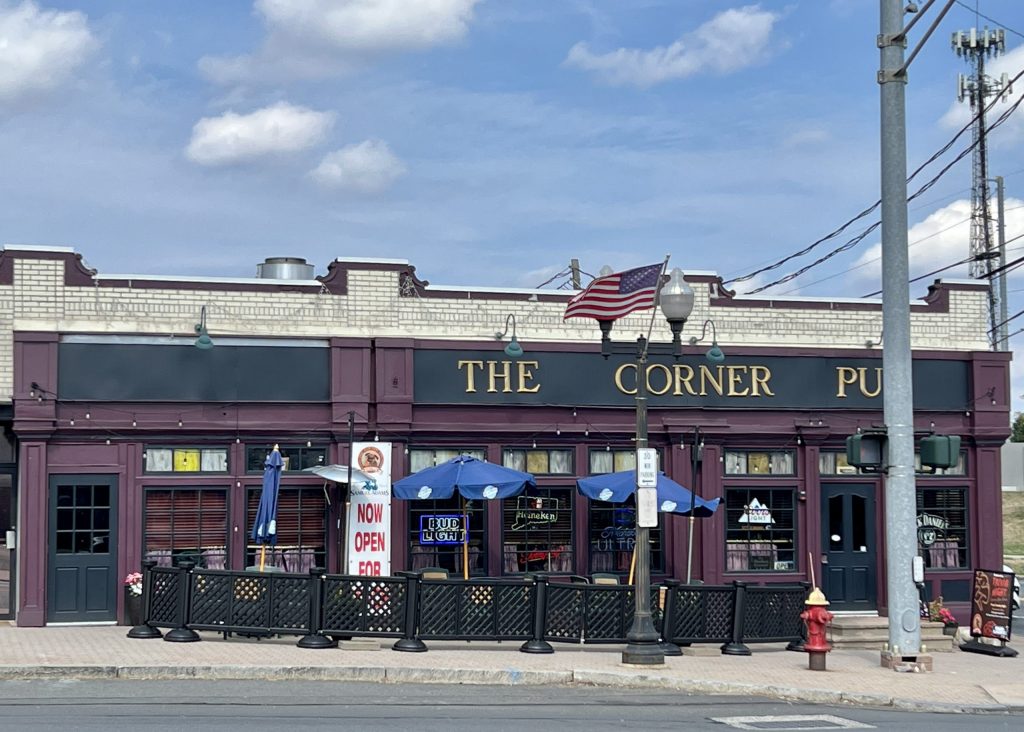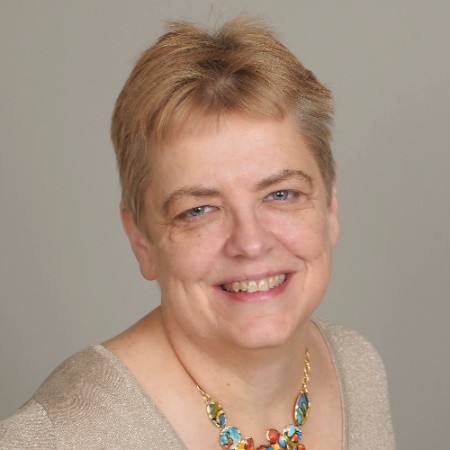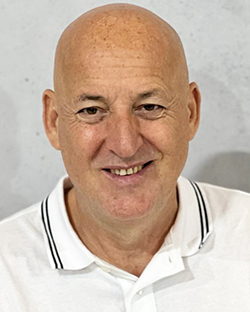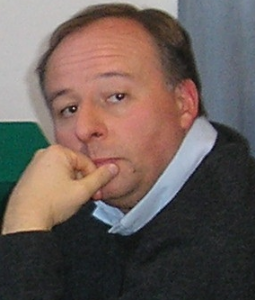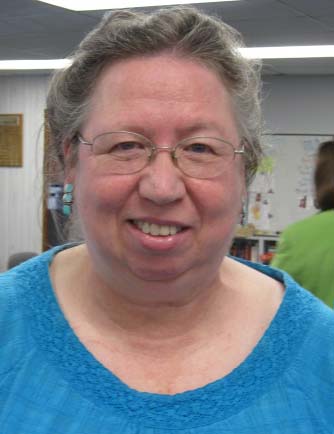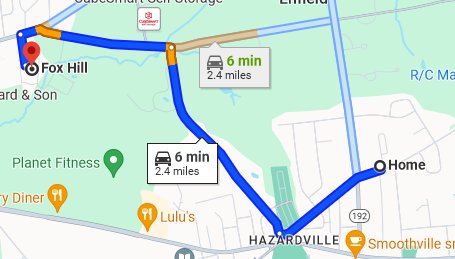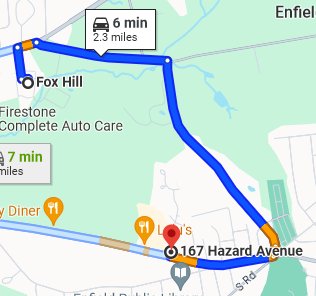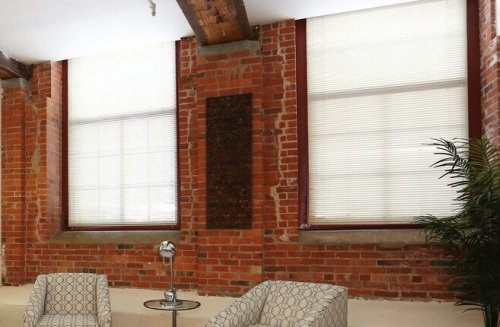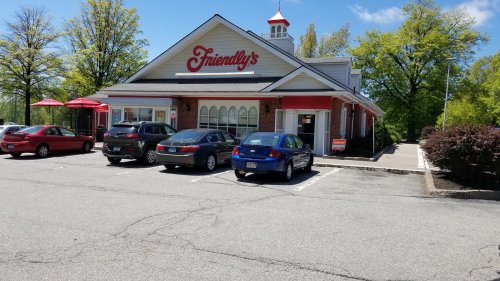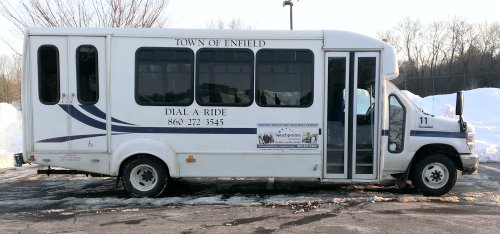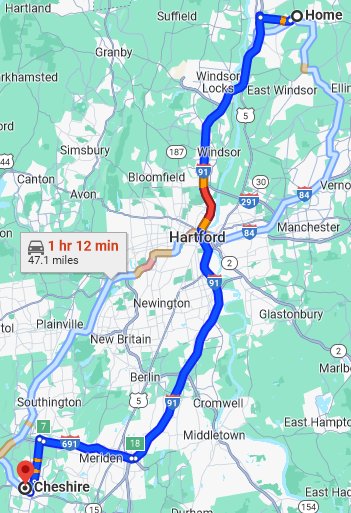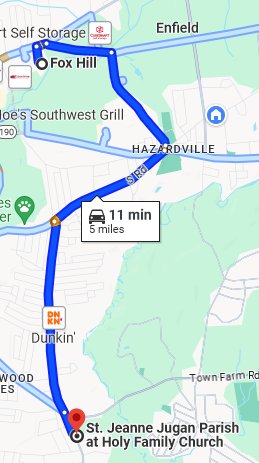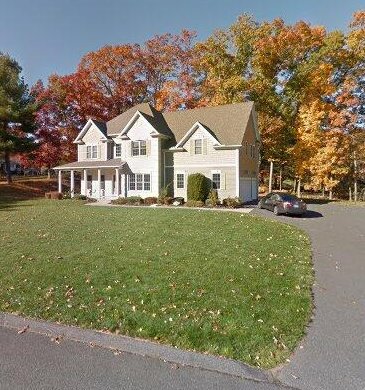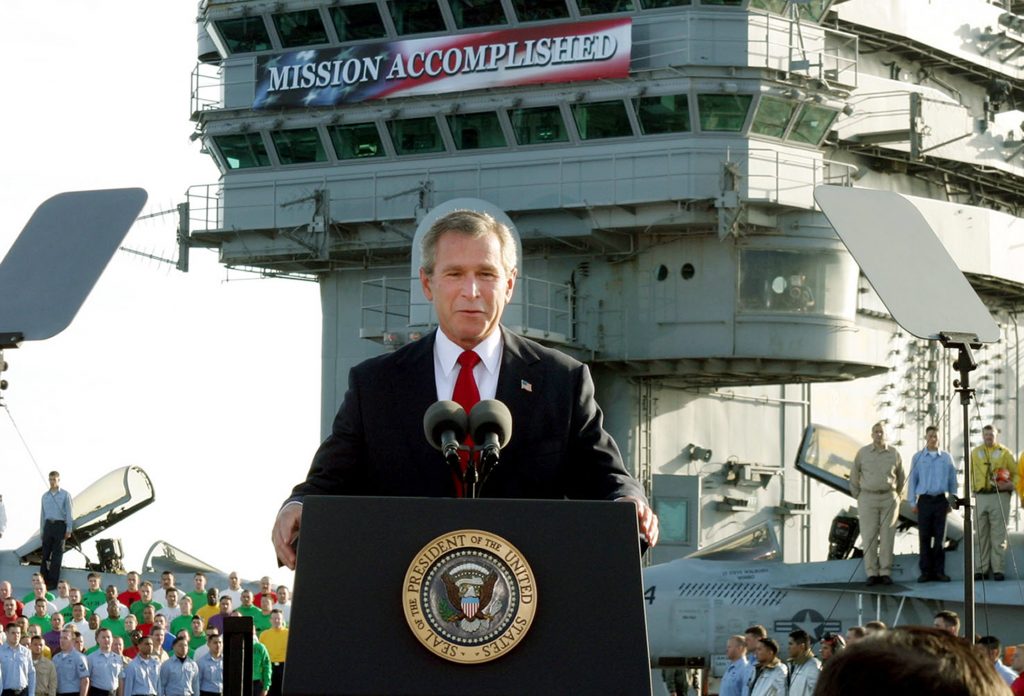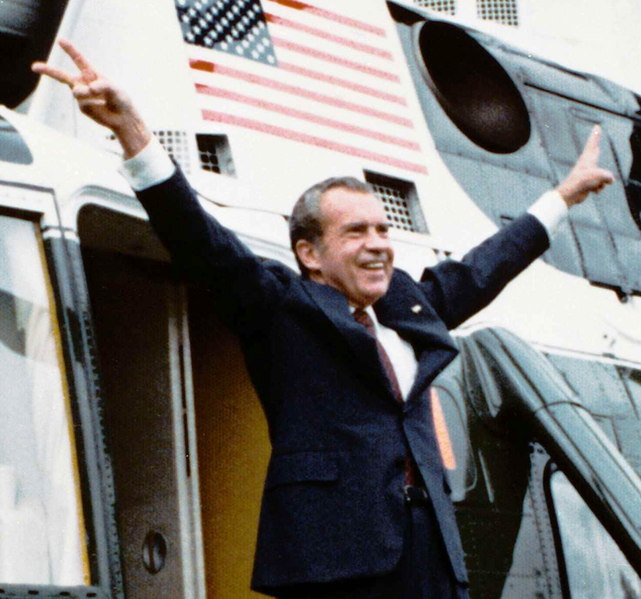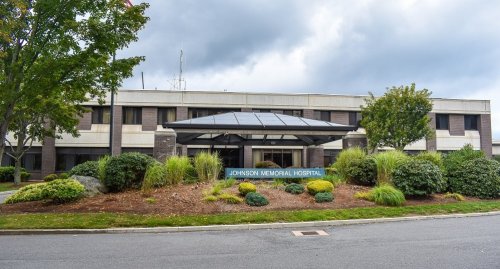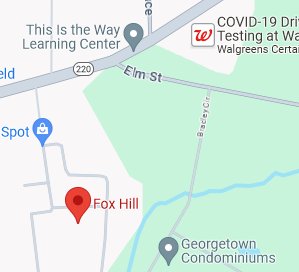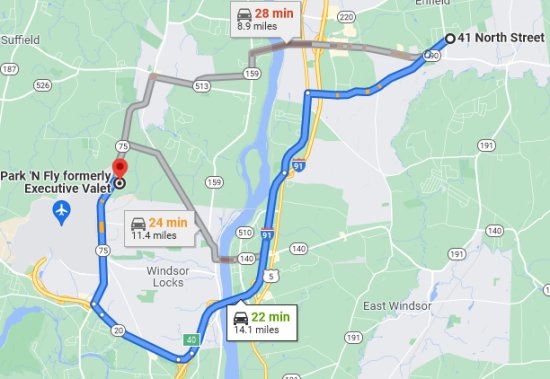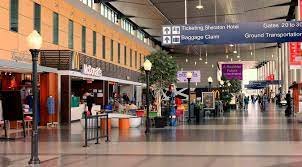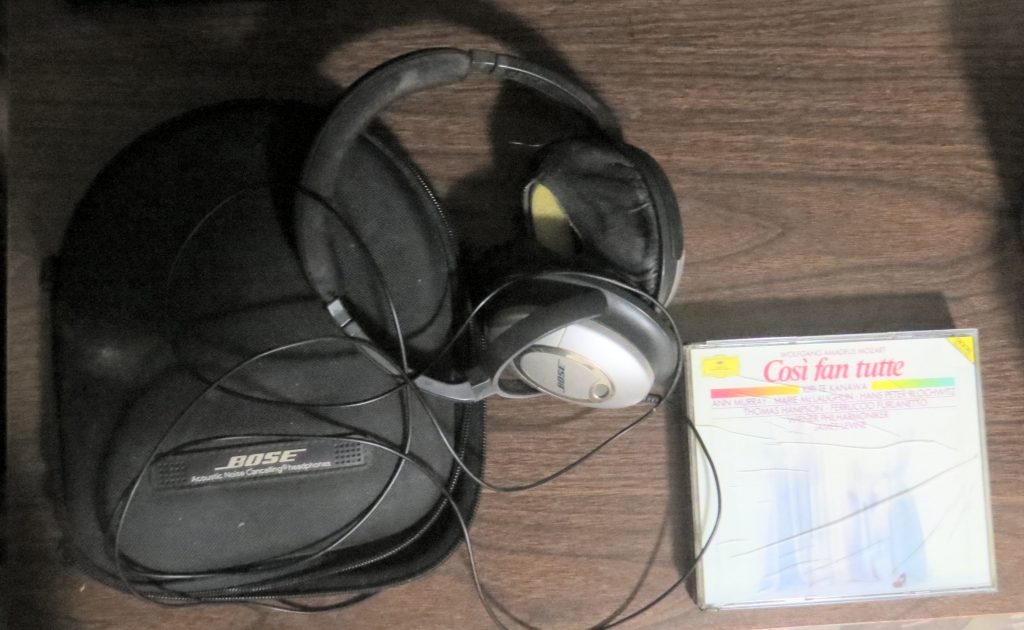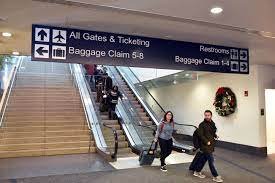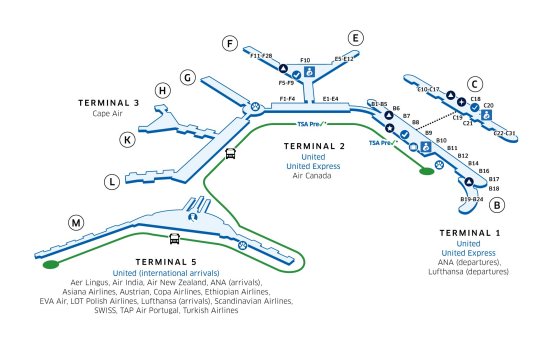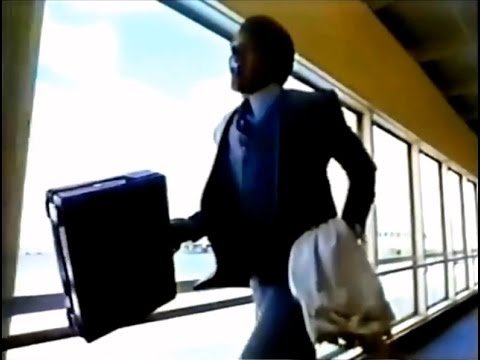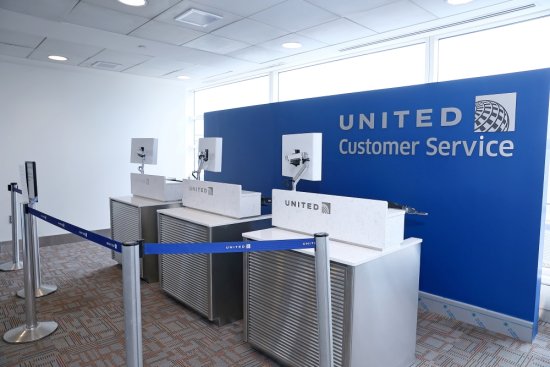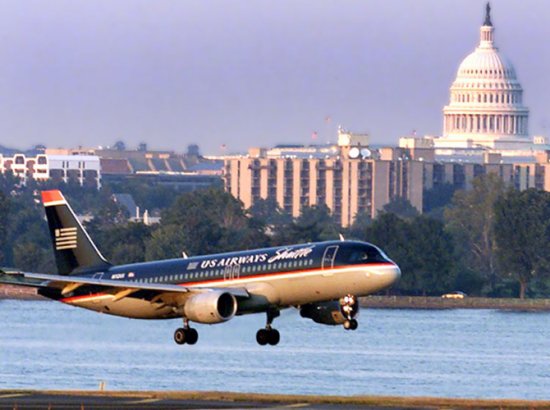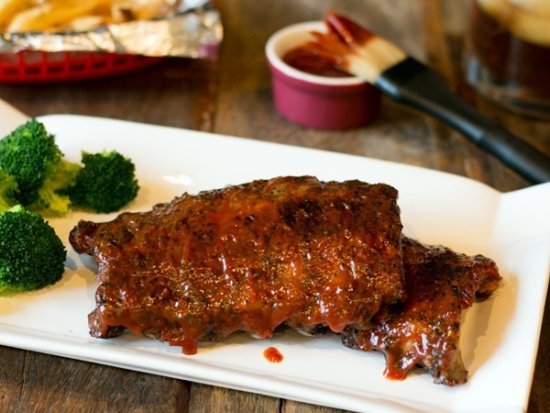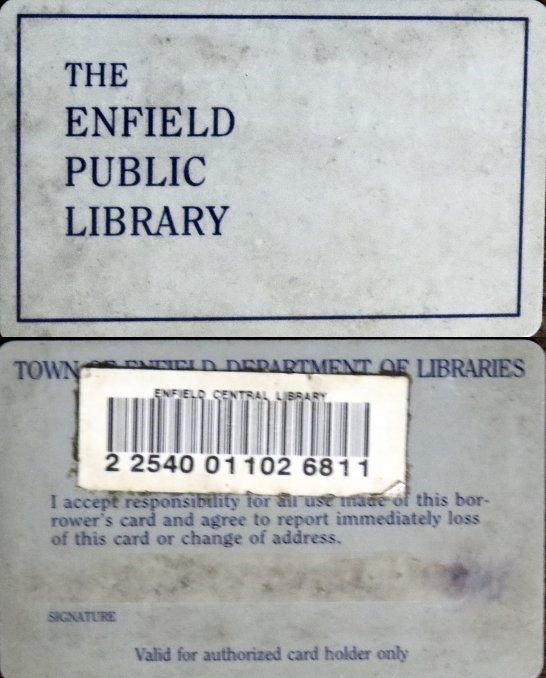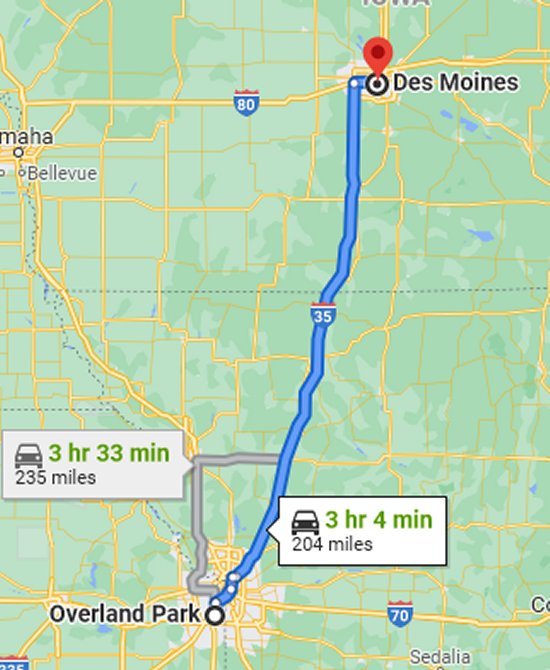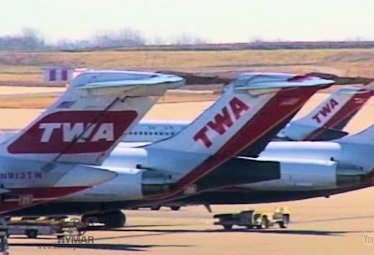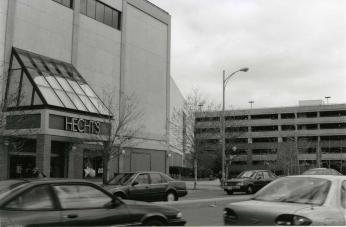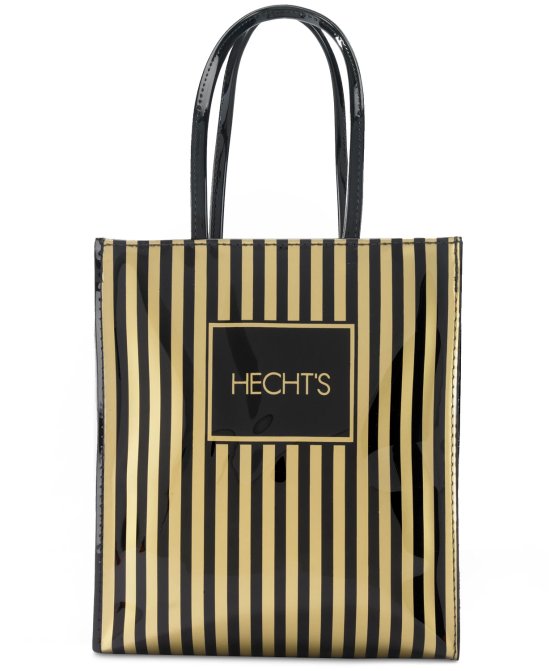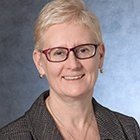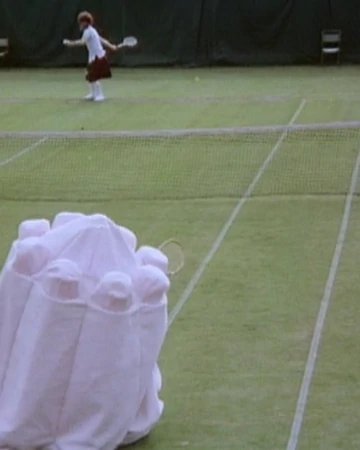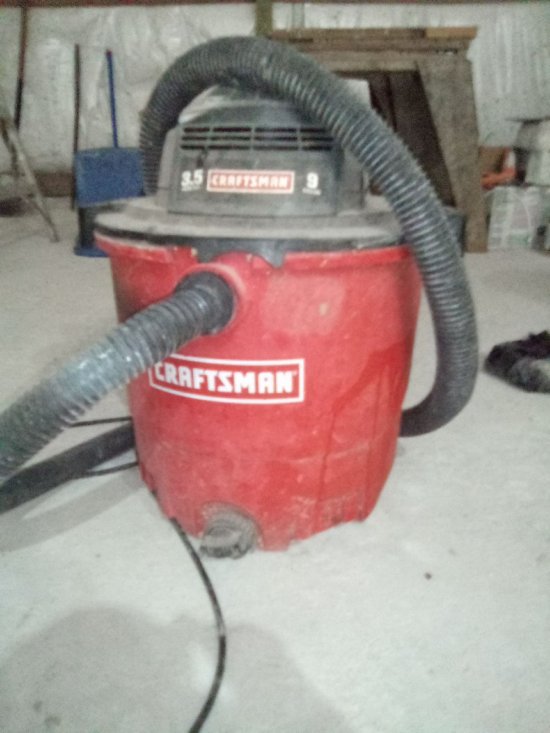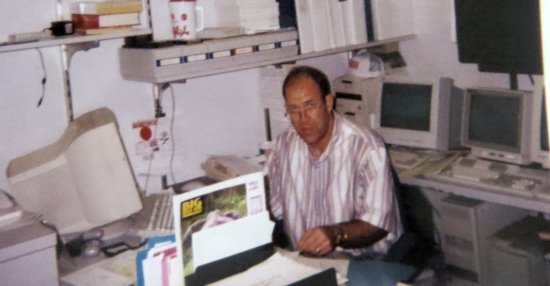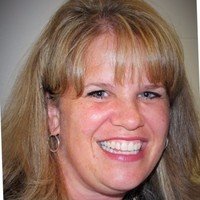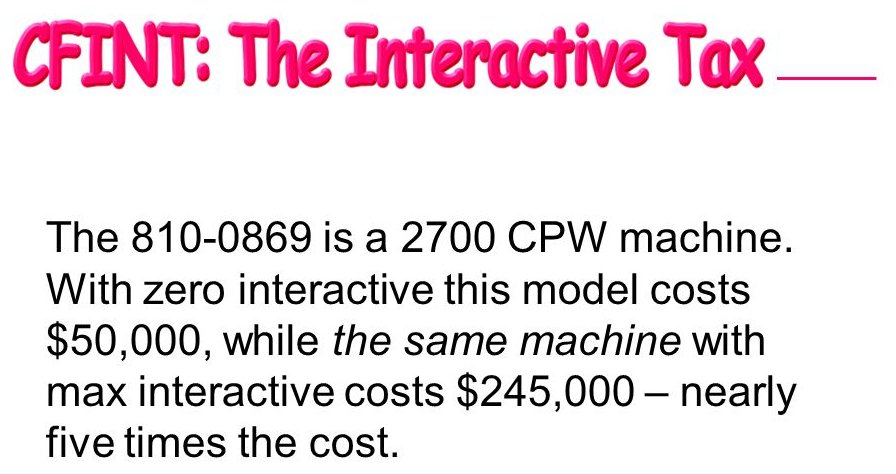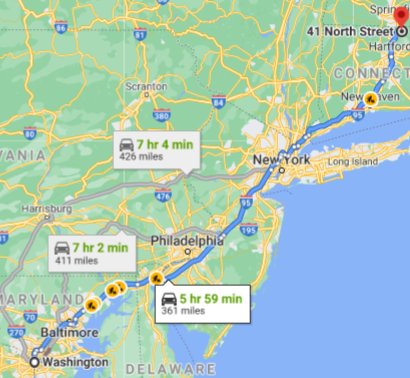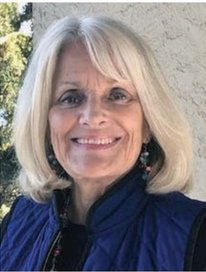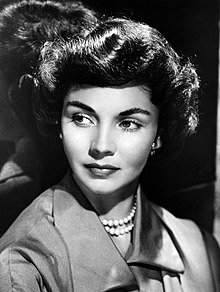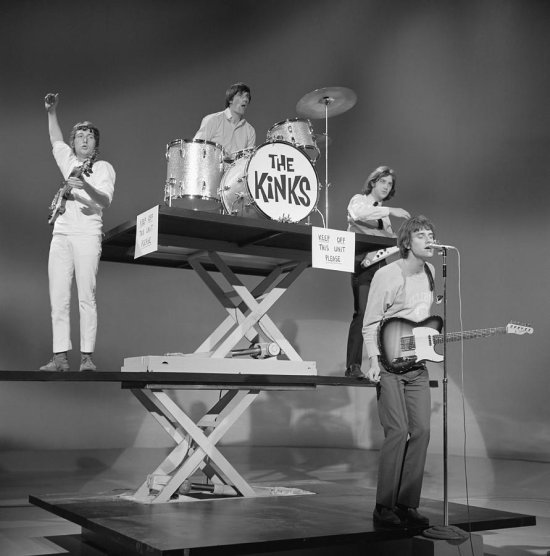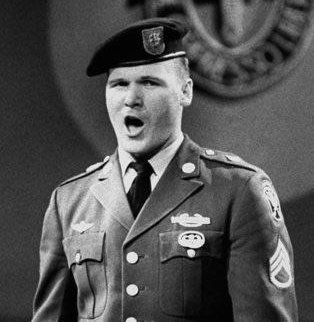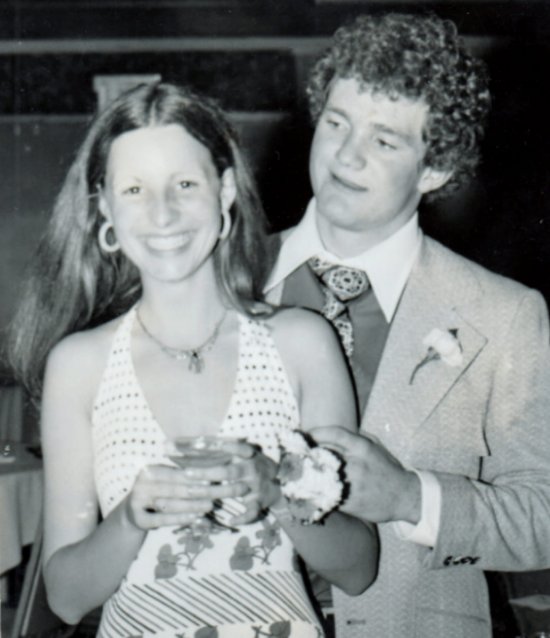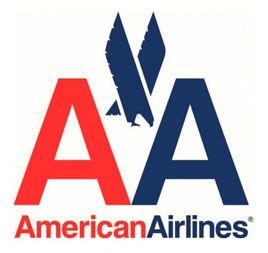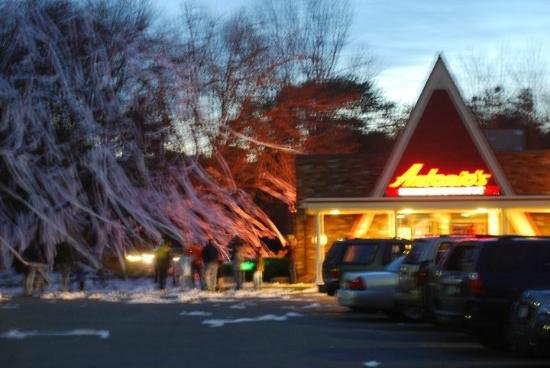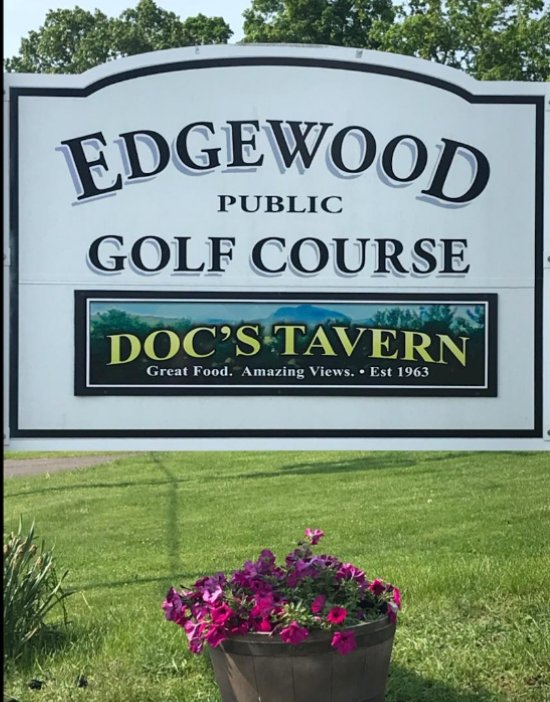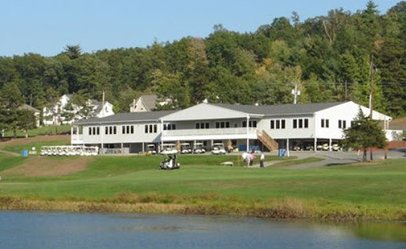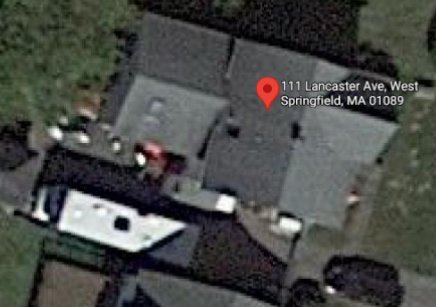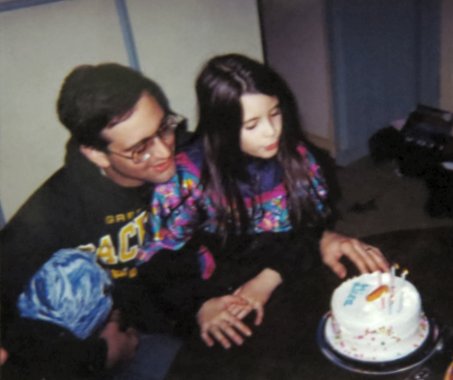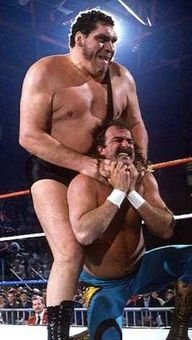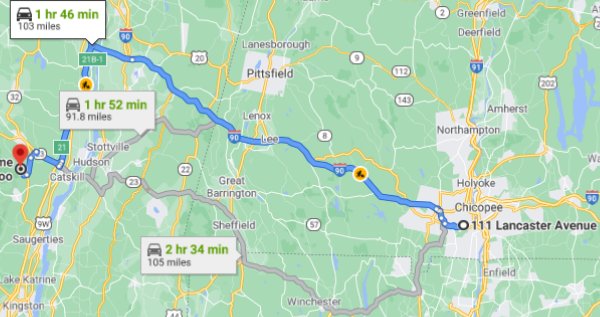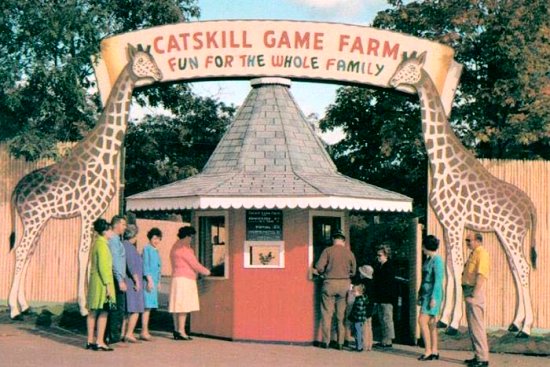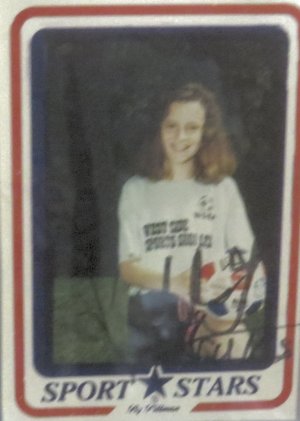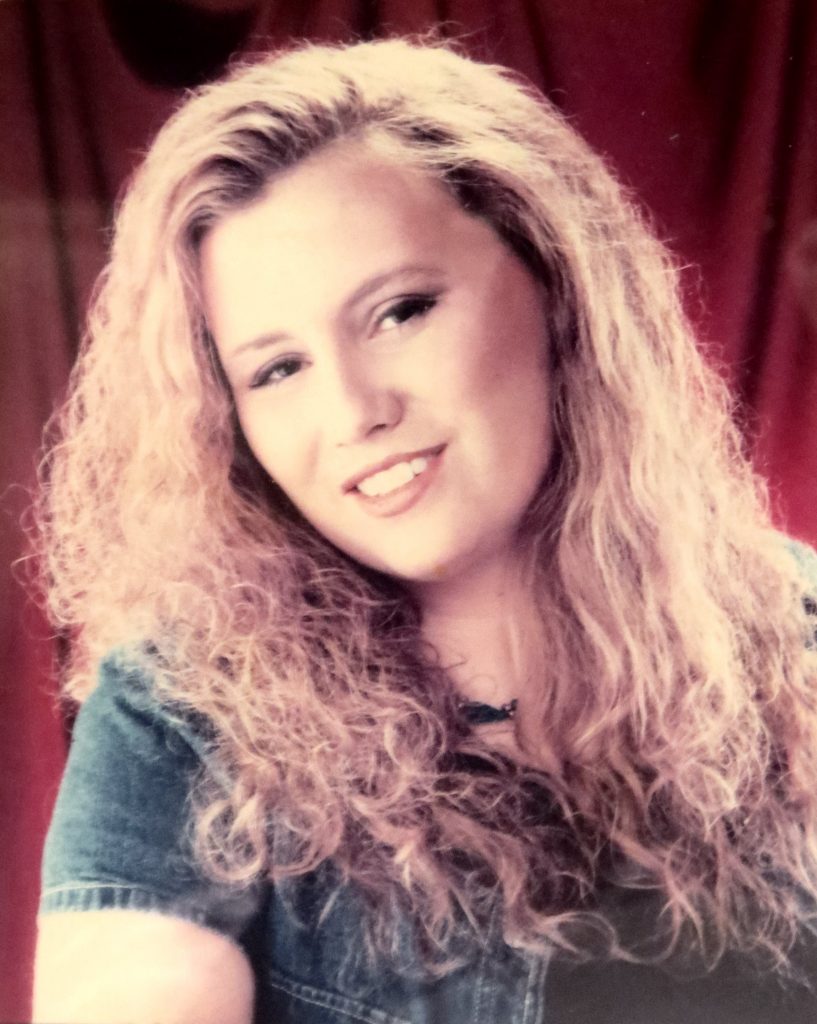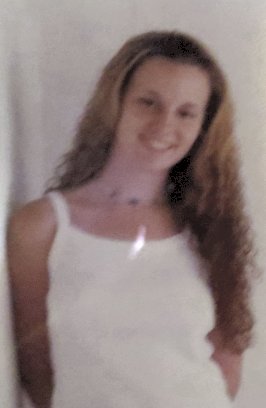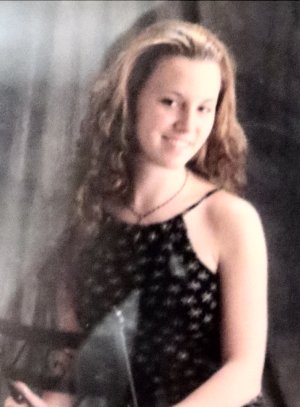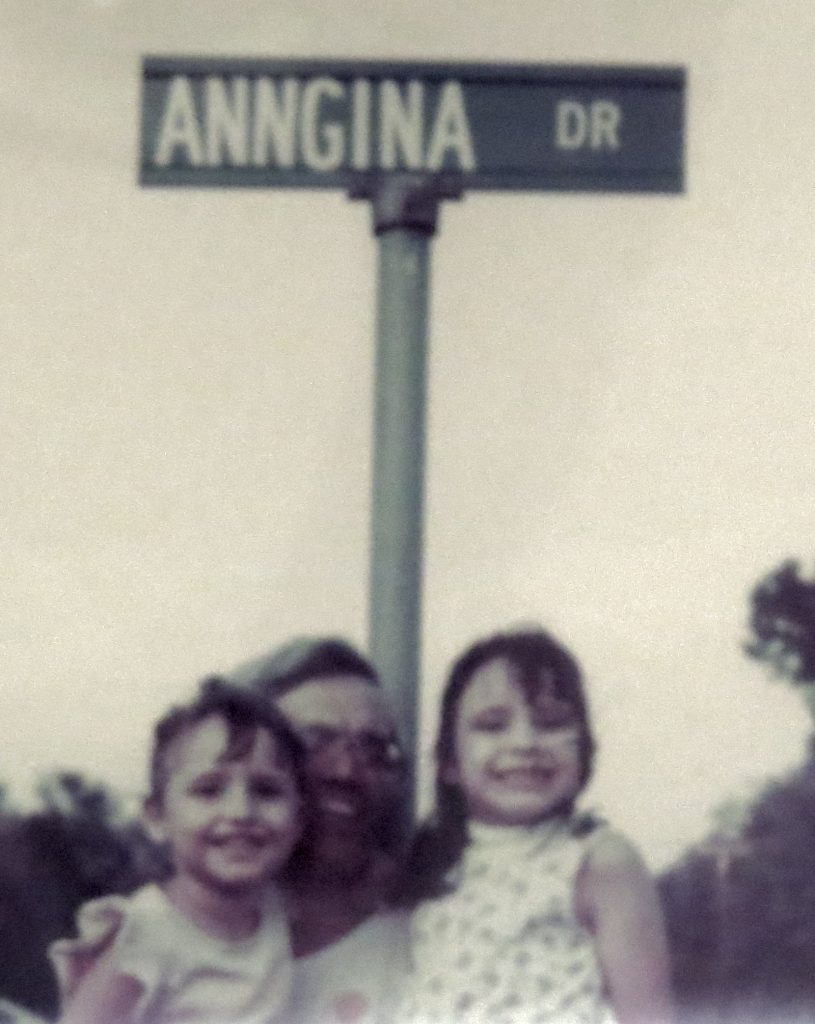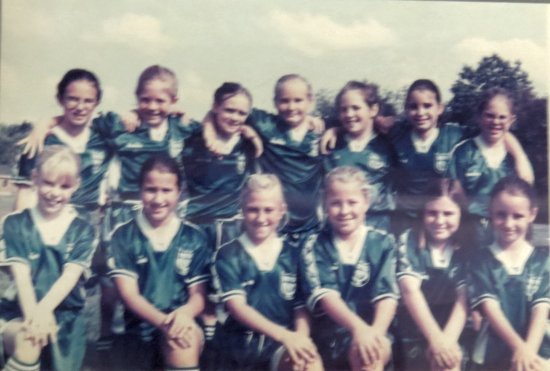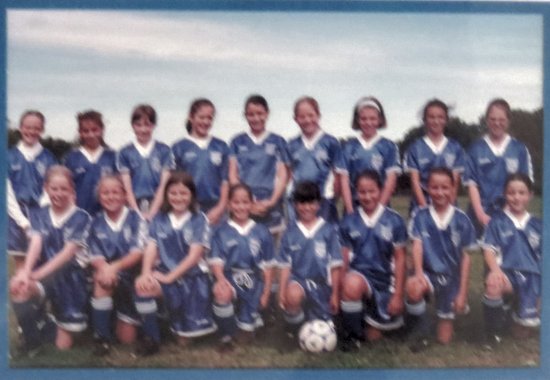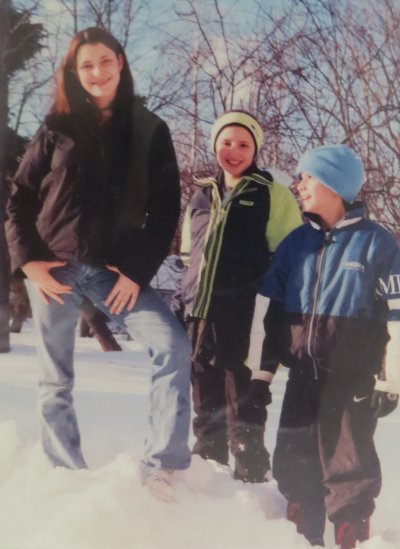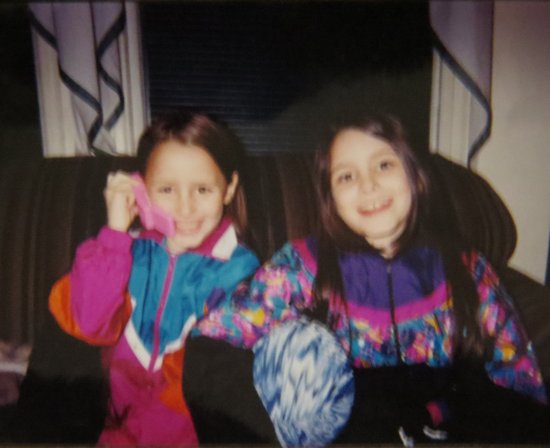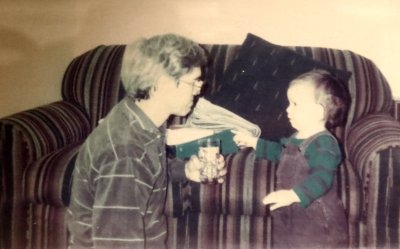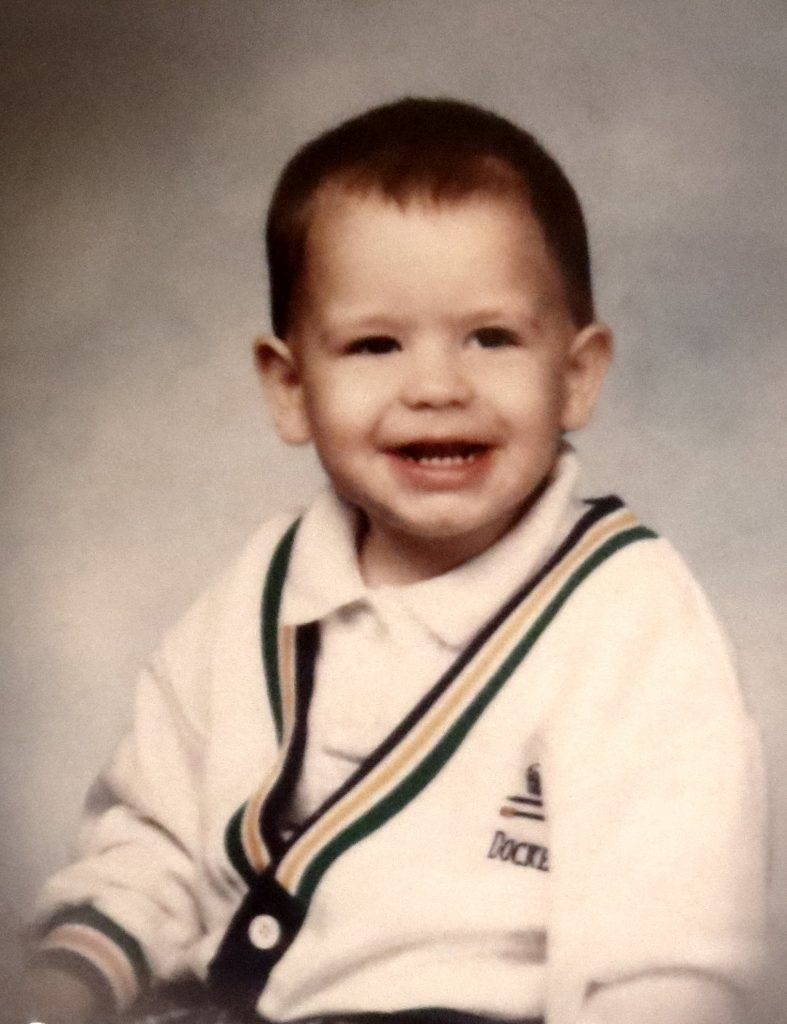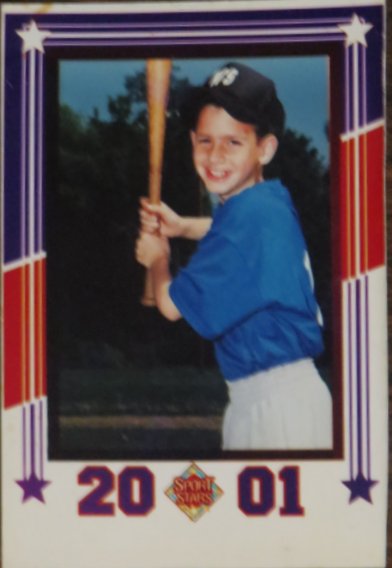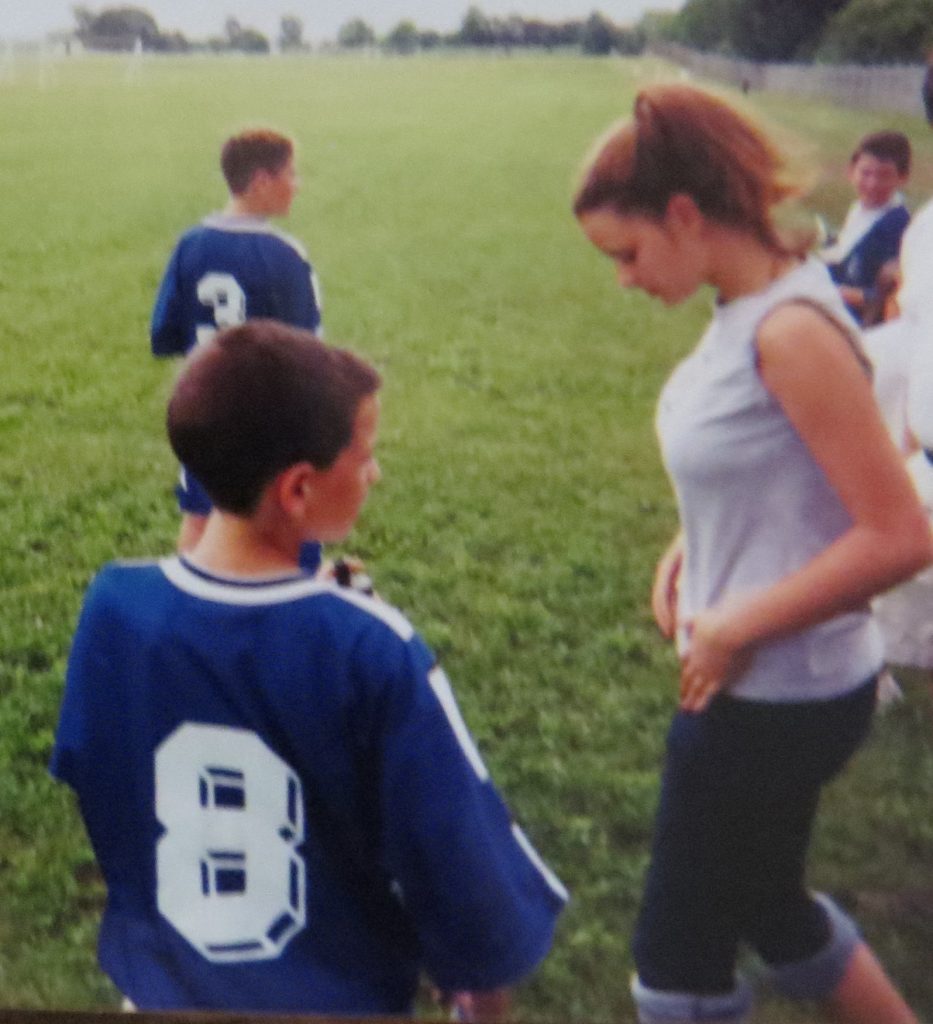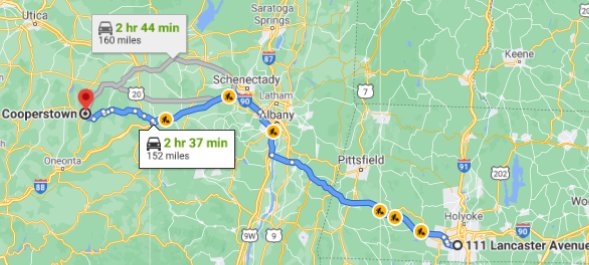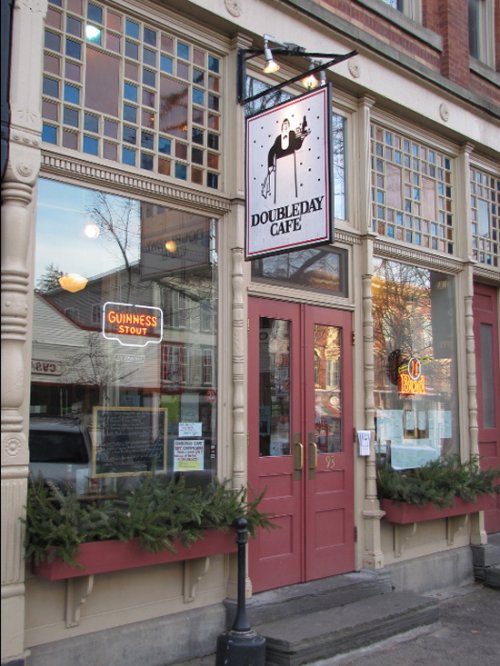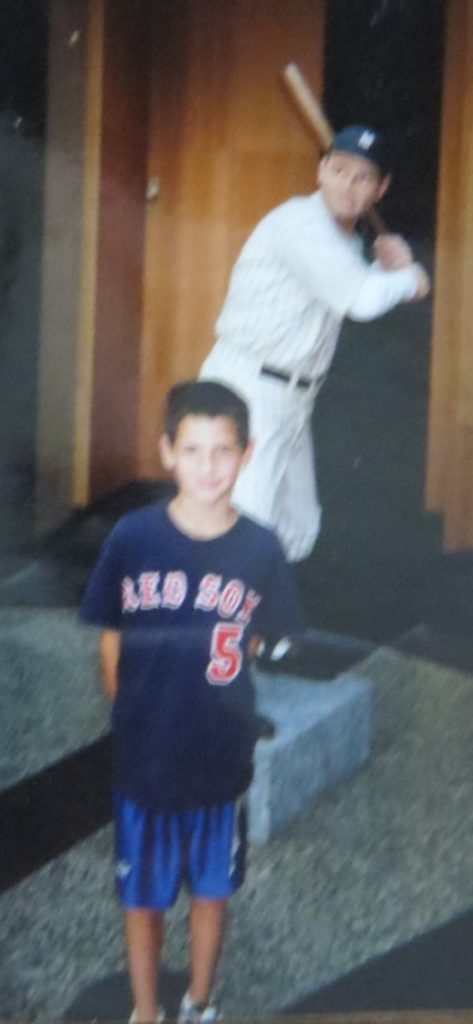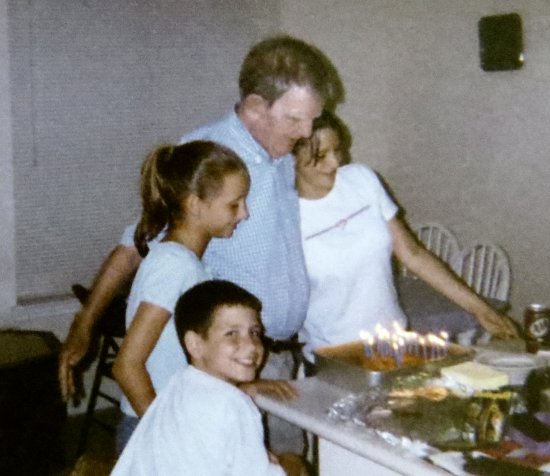Regular partners at the HBC. Continue reading
Preparation: For several years I have maintained a spreadsheet that contained one line per bridge partner. I only kept track of ones with whom I had played at least one complete session at a sanctioned game. I also had bookmarked the ACBL’s web page that contained the records of club games. However, when I started working on this entry, I was disappointed to discover that the link no longer worked. So, I have needed to rely on my memory more than I hoped.
This document contains stories about partnered with whom I played several times. Part 2 (posted here) describes the ones that I met through the mentoring program or the High-Low game on Sundays and people that I only played with once or twice.

The HBC: The Hartford Bridge Club (HBC) was founded in 1931. It is the oldest continuously operating bridge club in North America. Its headquarters since October 1995 has been at 19A Andover Drive in West Hartford. I played my first game at the club and became a member on January 1, 2008. My partner that afternoon was Dick Benedict (introduced here), with whom I had been playing on Wednesday evenings at the Simsbury Bridge Club (SBC) for several years. At the time the club was charging $30 for a membership. The table fee was $5 for members and $6 for others. At the time I had only been playing in Simsbury. I joined the HBC because I had been asked to play in the games it ran on Tuesday evenings and Saturday afternoons. So, I figured that if I kept to that schedule all year1, it would be a good dealT
The person who asked me to play was Tom Gerchman. In preparation for playing with him I taught myself thirteen conventions that I had found in a book by William S. Root and Richard Pavlicek. I also bought Michael Lawrence’s CD about 2/1 (pronounced “two over one”), the set of bidding principles used by most players at the HBC and at tournaments. He had played 2/1 with his previous partner, Mary Witt2, and I eventually persuaded him to play it with me as well. At this point I knew enough conventions to be comfortable playing with nearly any new partner.
Tom drove a red BMW convertible. Between 2008 and 2023 he has purchased several new cars. Each one was a red BMW convertible. The license plate was GERCH. On trips he liked to drive, but the back seat was uninhabitable. If we were playing in a team game, the BMW was not big enough to hold four people. He borrowed his mother’s car.
I soon discovered that Tom wanted to play with me because Mary had resigned from their partnership. She wasn’t angry at him; she just did not like sitting across the table from him. I learned this when Tom and I played in a knockout with Mary and Ruth Tucker3 as teammates in the regional tournament in Danbury, CT. We made it to the semifinals of our bracket. After we had been eliminated Tom kept telling Ruth, “I got you gold!”
That evening the four of us went out for supper. I learned at that meal that Ruth had been a small child in Nazi Germany during the Kristallnacht in 1938. She was surprised that I knew quite a bit about the event. I had read about it when I had researched the backgrounds of two popes4, Pius XI and Pius XII, who had both been in Germany during Hitler’s rise to power. Tom had never heard of it.
For quite some time I enjoyed playing with Tom for several reasons. The first was that he liked to go to tournaments, and so did I. In addition, he was still working5, which meant that he could only play in evening games, and on weekends and holidays. That schedule conformed to mine. However, he was an avid golfer. So, in nicer weather he played less bridge. I also like the fact that he was not averse to learning new conventions. Bidding has always been my favorite aspect of the game.
At the SBC Tom occasionally played with his mother, Sue. He was sometimes pretty hard on her when she made mistakes. Wen she died in 2012 (obituary here) I was still playing regularly with Tom, and I went to her wake. I was the only bridge player who attended, but a number of Tom’s golf buddies were there.
After the evening games Tom and a small group of the other players went to the Corner Pug in West Hartford to discuss the hands and drink. Tom might have eaten a very late supper. I don’t think that he cooked, and he was not married.
It took me a while to realize it, but Tom definitely was obsessive-compulsive in some ways. For example we played together on two separate days at the NABC held in Boston in 2008. I discovered that he had memorized in terms of minutes how long it took to get to the site of the tournament from several spots on the route. Furthermore, on the day that I drove I let him off to register us while I parked the car. He insisted that I must park in precisely the same spot that he had used on the previous day. Just to be peevish I parked in the same spot, but one floor lower.
On that occasion we played in an Open Swiss with a pair from the partnership desk. We won our first round against a team from Connecticut. After that it was one humiliating defeat after another. Our teammates were upset at us. We beat a hasty retreat after the last round.
I heard from Mary Witt that Tom read the Hartford Courant every morning and always started with the obituaries. She also said that he had a huge stack of old newspapers in his house. I never went to his house, and so I cannot verify this.
Tom was much more obsessed with the scores than I was. He was pretty hard on me at club games, but he very seldom talked during rounds at tournaments. He also stayed after club games and audited the scores. He once told me that he loved to check calculations. He confided once that he should have been an auditor.
I was still playing with Tom at the time of my Life Master parties at the HBC and the SBC in early 2010. I remember that he gave a little speech at the HBC in which he talked about my habit of sending him emails about what I thought we could have done to do better in the previous game. In my acceptance speech I thanked every single partner that I had had at that point. I thanked Tom for teaching me “that in a six-team Howell, you don’t play against the pair that you follow and the pair that follows you.”
I don’t have any great memories of playing with Tom. We did not do very well at most tournaments. Eventually, I stopped playing with him. I just could not stand the fact that he said and did the same things over and over and over and over. He also talked about the hands too much in club games while we were still playing. I found myself pounding the steering wheel while driving home after playing with him. Fifteen years later I still react negatively to the sound of his voice.
Actually, I quit twice. After the first time he persuaded me to try again. It took me very little time to realize that he was never going to change. I quit again.
I still teamed up occasionally with him for team games. We had much better results when I did not have to sit across from him.
Tom invited me and Sue to the party that he threw for himself on his sixtieth birthday. It was at a restaurant on the west side of town. He was celebrating the fact that he had survived that long. Apparently both his only brother and his father had died from heart attacks when they were in their fifties.
After my partnership with Tom was dissolved, on most Tuesday evenings I played with Michael Dworetsky. He had been playing for quite a while before I returned to the world of bridge, but he had only occasionally played in tournaments. I never was quite sure why he had avoided tournaments before I began playing as his partner.
I have several vivid memories of playing with Michael. We drove to a sectional in Johnston, RI, and did well enough to finish first in the C Flight in the afternoon session of the Open Pairs. As the director read the results, I said to Michael, “Let’s see how he does with our last names.” He butchered both of them.
The most catastrophic mistake of my bridge career occurred in the penultimate round of the Flight C qualifying tournament for the Grand National Teams (GNT). We were definitely in contention when Michael made a Help Suit Game try by bidding 3♣. I needed to bid 4♠ if I thought that we could take ten of the thirteen tricks or 3♠ if not. I considered all that I knew about the hand and finally decided that we probably did not have enough. Unfortunately, I did not bid 3♠, I mistakenly passed, leaving Michael in a ludicrous club contract.
I played with Michael when he made Life Master in a sectional in Westchester County. He drove us into New York City to a deli to celebrate. I had a Reuben sandwich; he had pastrami. We had a great time, but it cost him a fortune to park the car.
He almost always drove us to tournaments. On one occasion I spilled some coffee on the rug in his car. He did not yell at me, but I knew he was upset. He had a very nice car. It was the first that I had ever been in that had a both a built-in GPS and a hand-free telephone.
One of the best calls that I ever made in bridge was when Michael and I played against two ladies, one of whom needed to win the match in order to make Life Master. I opened 1♠, the lady overcalled 2♥, Michael doubled, indicating that he had a pretty good hand with clubs and diamonds. I had six spades, five hearts that included two honors, a club, and a diamond. I passed. We took the first nine tricks. She was down four for 1100 points. She did not make Life Master that afternoon.
I gave a little speech at Michael’s Life Master party. It might have been the best speech that I ever gave. It was not as effective as Urban II’s call for a crusade in 1096, but mine got more laughs. I began by claiming that Michael was a founding member of the club in 1931. I also mentioned the hole in the sole of one of his shoes.
Michael and I played together at the NABC in the summer of 2013. I posted my recollections of this adventure here. We also flew down to the Gatlinburg Regional Tournament in Tennessee in 2013. I took notes and posted them here. We won a knockout and a lot of masterpoints there.
The house in Bloomfield in which Michael lived with his wife Ellen was struck by lightning. Eventually they moved to Palm Beach Gardens, FL, but I have seen Michael at bridge tournaments in New England a few times. He usually was playing with a teaching pro named Bob Lavin.
The nicest person whom I ever met was Dave Landsberg. When I started playing on Tuesday evenings, Dave was playing regularly with Dan Koepf. I invited them to team up with Jerry Hirsch and me in Flight C of the GNT event one year. They accepted, and we did quite well. I then wrote to both of them to ask if either one wanted to play in a tournament with me. Dave responded positively, and we were partners and good friends right up until his death (obituary here) in 2016. In fact, he was planning on playing with me in the Cape Cod Senior Regional the week that he died. I wrote up my experiences at that tournament, including my thoughts about Dave, and posted them here.
Dave was on the HBC’s Board of Trustees, and I was not. I once asked him what the BoT meetings were like. He told me that at that time there was a big controversy over toilet paper. He said that the women on the board were complaining that the toilet paper in the ladies’ room was too flimsy. Dave informed me that his position was that we should give them better paper, but it was only fair that they should agree to pay higher table fees. I laughed for several minutes.
Dave and I won a couple of events together. The most memorable one was in Cromwell, CT, when Dave played with Kay Hill, and I played with Ginny Iannini (introduced here). I posted a photo6 of us on the District 25 website, NEBridge.org, as I did the winners of all events at D25’s regionals. When Dave’s wife Jackie saw the photo of Dave and Ginny side-by-side, she told him that he could not play with her again. When Dave told me this, we both broke out laughing. However, it made me wonder why Sue never complained about me playing with Ginny.
I was playing with Dave and three other people when I set the world standard for captaining a five-person team in a sectional Swiss in Auburn, MA. We were playing with Pat Fliakos,7 one of Dave’s regular partners, and a pair that we picked up at the partnership desk, Charlie Curley (introduced here) and Mike Colburn. Since Mike and Charlie were regular partners, I assigned them to play all eight rounds. Pat and Dave would play six rounds, four together and two each with me. I would play the middle four rounds. This would allow me to leave early and mow the lawn, which needed it badly. When I departed, our team’s score was slightly above average, but in my absence my four teammates won both of the last two rounds, defeating the best team in attendance in the last round. We finished third overall and first in B and C.
The grass did not get mowed. On the trip home my 2007 Honda was rear-ended on the Mass Pike by someone driving a rental car. I did not yet have a cellphone, but he did. He did not speak English very well, but I did. So I called 911 on his phone. After about twenty minutes a state trooper appeared. After a few minutes he told me that he had given the other man a ticket for following too closely. I already had his insurance information; he had Progressive. So, I just drove home.
A few days later a Progressive adjuster examined my car and assessed the cost to fix a small dent on one bumper at $1500. I later was contacted by someone from Avis, who had rented the car to the other driver. They said that they would accept Progressive’s assessment and asked me to settle for $2,000. I spelled my name for them, and gave them my address. The check arrived a few weeks later. Four or five years later I traded in the car. I never considered getting it fixed.
Dave’s Life Master party at the HBC was shared with Sue Rudd (introduced here). I told the above story (minus the car crash and insurance). I balanced it with the tale of the first sectional in Hamden, CT, in which Dave and I competed as partners. We finished dead last in both the morning and afternoon session. I have never heard of anyone who could match that performance.
The best time that I spent with Dave was when the two of us dined at an Italian restaurant in Hyannis, MA. I recall that I ordered the Bolognese and a glass of wine. The food was good, and the conversation was better. For some reason it was very easy to talk to and to listen to Dave. By the time that we left, we had solved the most serious of the world’s problems.
I went to Dave’s wake and the ceremony for him at Wesleyan, where he had worked. When I met Jackie, I told her that Dave really loved her. I was certain of this because he never rolled his eyes when he talked about her. I really miss him.
A photo of Dave is in the Felix Springer section of this entry.
Peter Katz and I started playing together on Saturdays and Tuesday evenings after I stopped playing with Tom Gerchman. In 2023 I still played with him whenever the HBC had a game on Saturday. We had one great showing in August of 2023, which I have documented here.
Earlier in our partnership Peter and I played together in a few sectionals that were held in the Hartford area. At one of them we happened to have the last sitout in the afternoon session, which meant that we could go home early. Before we left we picked up hand records for that session. It did not take us long to realize that some of the hands that we played did not correspond to the ones on the printout. We reported this to the director, Tim Hill. He did not tear his hair out, but I am pretty sure that I saw his bow tie spinning around.
How could this have happened? Some directors like to play “web movements” when an awkward number of pairs are playing. If, for example, thirty-eight pairs are playing, the standard way to play it would be to have two sections, one with ten tables and one with nine. Both sections would be playing nine three-board matches. Each pair would only play against nine of the other thirty-seven pairs. A web movement would allow for one very large section playing fourteen two-board rounds. This requires two identical sets of boards, and they must be handled precisely correctly, but the directors who do this are very reliable about setting them up correctly.
In this case, however, the directors were not at fault. The two sets of boards were NOT identical. I don’t know how they were able to score this, but they eventually did. The directors definitely earned their salary that day.
When I first began playing with Peter he was something of a local celebrity. He and his wife (whom I never met) attended all of the home games of the Hartford University men’s and women’s basketball teams. Peter wore outrageous wigs to the games. I never met his wife, and I only saw photos of him in his super-fan getup.
At some point in the teens the couple got divorced, and Peter stopped attending the games. The marriage must have been stressful on him. He mellowed out quite a bit after the divorce.
At first Peter and I played a version of 2/1 that was not much different from what I had played with Tom Gerchman. At some point Peter began playing on Tuesdays with one of the best players at the club, Tom Joyce. They played a version of the Kaplan-Sheinwold weak 1NT system. I agreed to learn this and play it on Saturdays with Peter. That was what we employed in our big game.
Peter served as webmaster for the HBC. In 2023 I began working with him on posting the club’s monthly calendars.
Before the Pandemic I played regularly with Felix Springer. In fact we played together (and won!) in the very last game on March 15, 2020, before the HBC closed its doors for over a year. We also played together at a few tournaments, including a week at the Fall NABC in San Francisco in 2019. We also played together on a large number of very successful teams, but I usually paired with someone else.
Felix shared his Life Master party with Ken Leopold (introduced here). They asked Dave Landsberg and me to be their teammates. Before the play started, Dave turned to me and said, “Did you read their background stories? Why are they playing with us?”
I don’t know, but it was a good idea. We won our first four rounds. In the fifth round, we faced the other unbeaten team. They had at least five times as many points as we did. It was a very close match that turned on one hand. Laurie Robbins, an excellent bridge player, and I were both West holding the same cards. We each had to make a decision similar to the catastrophic one that I had made in the GNT with Michael Dworetsky. Laurie chose to try for game and went down. I settled for the partial.
Donna Feir, the longtime club manager, said that it was the only time that she could remember that the honorees won such a game, and also the only time that they were undefeated.
Felix, as president of the HBC, guided the club through the perilous times of the Pandemic. The club had almost no income, and it still had considerable expenses. He kept everyone involved with periodic newsletter, analysis of playing bridge with robots, and walks in the park. Donna confided to me that without Felix the club probably would not have survived.
In 2022 Felix did something that I never would have expected him to do, and it hurt me deeply. The story is related here.
Ann Hudson lived across the river form Enfield in Suffield, CT, with her husband, Randy Johnson. I thoroughly enjoyed playing with both of them. The card that they played was very sophisticated. I must admit that I had a difficult time to remember the modified Manfield responses to an opponents takeout double.
For a few years Ann and I were rather regular partners for the half of the year that Ann and Randy spent in New England. The other half of the year they lived in South Carolina. In 2022 they moved from Suffield to Hadley, MA.
The only times that I got to play at the HBC with Randy were when Ann had to cancel at the last minute. It only happened a few times. He was an exceptionally good player. We played together in the open pairs in the sectional in Great Barrington, MA, one year and won the afternoon session.
I met Ann while I was working at the partnership desk at the NABC in Providence in 2014. After that we played together pretty regularly at sectional, regional, and NABC tournaments and occasionally at the HBC if she could get away from her chores on their mini-farm.
I usually stopped at the McDonald’s on the south side of Hazard Ave. on the way to either their house in Suffield or at the Hampton Inn that was about halfway between us. On one occasion I was sitting in my blue 2007 Honda in the parking lot while I ate my sausage biscuit with egg. I had turned off the Honda’s engine while I ate. I could not get the car to start, and I did not have a cellphone yet. I had to go in to McDonald’s to use someone’s phone to call Sue, and I had to cancel my game with Ann. If was embarrassing. The best thing about Hondas is their reliability. Mine was telling me that it was time for a trade-in, and I listened.
Ann had actually been born in China. Both of her parents were university professors. They brought her to the U.S. when Ann was very young.
In 2015 my wife Sue and I decided to fly to Denver to play in the Fall NABC. Randy and Ann also planned to attend. Ann and I decided to play in two NABC events: the 0-10,000 Swiss and the 5K Blue Ribbon Pairs.
Before those events started I picked up a partner for the evening side game, Kathy Rolfe. I had met her at a previous NABC when we were both playing in the lowest level of the Life Masters Event. When we came to her table she asked me if I was related to Vic Wavada in Kansas City, and—get this—she pronounced my name correctly. It turned out that Kathy knew Vic’s wife Theresa very well, and she had mentioned that I played bridge.
Kathy and I finished near the middle in the side game. We probably should have done a little better.
I had arranged to play in the 10,000 Swiss with a woman from Arkansas named Ti Davis.8 I told her that I was 6-feet tall, grey-haired, and skinny, and I would have on my red and blue Barça hat. She was playing with an Asian woman whom she met at the partnership desk. Unfortunately, we were overmatched in the event and only won one or two rounds.
On the next day Ann and I teamed up with Randy and one of his regular partners to play in an Open Swiss event. In the second round we played against Leonardo Cima and Valerio Giubilo, famous players from Rome. We had a little time to talk with them before the match. They told me that they were both from Roma. I told them that it was “la mia città preferita in Italia.”
In the match Giubilo made an incorrect bid on an important hand causing them to miss a slam. Cima gave him a severe dressing-down. During the rest of the match they both spoke impeccable English, but during this post mortem Cima filled the air with Italian curse words.
We won the match, but we did not do well in the event. Giubilo and Cima won over 100 points in the tournament.
In the Mini-Blue Ribbon Pairs Ann and I played as well as we have ever played. I was very excited when we made it to the second day. We played pretty well then as well, but not quite well enough.
I was too intense for Ann in the Super Senior Pairs and Mini-Blue Ribbon Pairs at the NABC in Honolulu, as described here. She was not angry at me; I think that she felt sorry for me more than anything. After the tournament she drove to the airport and drove Sue and me to Enfield. Ann and I have played together in less stressful situations a few times since then.
I played with Michael Varhalamas a few times at the Saturday game at the HBC. I also played with him at least once in a Swiss in a sectional somewhere in Westchester County. I remember that he drove us there in his truck. Our teammates were two women from, I think, New Jersey. I don’t remember their names. Michael made the arrangements.
Twice during the game he bid dicey grand slams that I had to play. I made the first one without too much difficulty. The second one, however, was in the last round and required a squeeze—not my specialty. However, I pulled it off, and we ended up with a very good score.
Michael and his wife eventually moved to Saint Petersburg. Sue and I went to a bridge game there, and my partner, Chris Person, and I played against him in the first round of a pairs game at the local club. On one hand Chris opened 1[Suit x=”C”]. I passed with three or four points and only one or two clubs. Chris had only three clubs; it was a bloodbath. Michael recommended bidding in that situation, but only over 1[Suit x=”C”], not over any other opening bid.
Before the Pandemic I played fairly regularly at the HBC with Connie Dube ( pronounced DOO bee). I met her when she and Myrna Butler agreed to be teammates with Ken Leopold and me at a regional tournament. They were late for the first round. Helen Pawlowski and Sally Kirtley sat in for them for one or two hands. In case you are wondering, this was definitely not legal. Since Helen told me that Myrna was always late, I did not hold it against Connie.
Connie and I played at a few sectional tournaments. Her availability was quite limited because her husband was suffering from severe chronic illnesses. As of 2023 she has not resumed playing after the Pandemic.
At the HBC I have played with Joan Brault quite a few times when one of her regular partners, Mike (really Michele) Raviele or Aldona Siuta, could not play. We have never set the world on fire, but we have played together a few times in 2023.
Paul Pearson and I teamed up with Mike and Joan at a sectional Swiss in the Hartford area. I think that we did pretty well.
She was a very talented artist. She also had a grandson who was a pitcher/outfielder for the Pittsburgh Pirates.
Over the years I have played with Mary Eisenberg both at the HBC and at a few tournaments. She asked her to help her to get her Life Master designation at an upcoming regional tournament in Danbury, CT. We played together in club games at least twice so that we could accustom ourselves to each other’s styles. One of those was a STaC (Sectional Tournament at Clubs) game that we somehow won. We earned a lot of silver points for that, but Mary still needed a small fraction of a gold point.
Mary asked me to drive us to the tournament. She had apparently been in an automotive accident a few months earlier, and she was still shaky about driving, especially at night. I picked her up at a parking lot at a supermarket near her home. I never did understand why this arrangement was necessary, but I did not question it.
We played in the Golden Opportunity Pairs at the tournament. It was a two-session event limited to players with less than 750 masterpoints. At the time I was within a few points of the limit. So, I was not afraid of any of our competitors. It was safe to say that I had more tournament experience than any of them. Gold points were awarded to players who had a good combined score (known as “overalls”) for the two sessions, but a smaller amount of gold was also awarded to the pairs that finished first (both North-South and East-West) out of the ten in each section of ten tables for each session.
We did very badly in the morning. I remember interfering against a team playing Precision. The player with the strong hand doubled my bid, and it resulted in a four-digit score in the minus column. Mary did not play very well either. Our score was bad enough that we had very little chance of getting one of the overall awards. Mary was very disappointed. She asked me if I wanted to go home. Go home? I hadn’t driven all this way when there was still a chance of achieving the objective. I said that we just had to win our section in the afternoon session, and that was (at least from my perspective) a reasonable goal. If we played as well as well as we had in the STaC game, we would prevail easily.
We did much better in the afternoon. I have always had a pretty good feel for anticipating results. I reckoned that there was a pretty good chance that we might have won. You never knew for certain; someone may have received a lot of “gifts” from their opponents.
During the last round they posted the standings after the penultimate round. We checked it when we finished playing the last round. We were in first in our section, but only by one point. I thought back on the last round. On the first hand one of our opponents had made a grievous error that should have given us a good score. On the second hand we bid to the best contract, but Mary made some mistakes in the play. The third hand was mediocre, but we did avoid possible errors.
It took the directors nearly half an hour to post the final scores. Mary was beside herself with worry. They finally posted the scores. We tied for first place, and so we had to split the gold award with the other pair. Fortunately, that was just enough for Mary to become a Life Master.
The trip back to Hartford was in a downpour. However, my Honda had good tires, and so I was not much concerned with the water, and I still had pretty good vision for night driving. So, I was going the speed limit. I nonchalantly passed trucks that were going slower. Mary had to hide her face for most of the ride. She was terrified of another accident.
When we got to Hartford Mary could not remember how to get to the parking lot when coming from the west. We drove around for five or ten minutes before she got her bearings. Since I still had a half-hour drive to Enfield, I was annoyed by this.
Some months later the club sponsored a Life Master party for Mary. I gave a short speech that highlighted two aspects of her activities. At the time she often brought baked goods or other goodies to the club. She also cooked professionally. She even cooked for the Archbishop of Hartford for a while!
The other aspect was her fear of driving. I claimed that she had taken up racing on the Formula 1 circuit, and I held up a large picture of her alleged Ferrari. This reference went right over (or maybe under) Mary’s head, but a few people in the audience understood what I was talking about.
I may have played with Eric Vogel at the HBC more often than any other player. He started playing a few years after I did, and he amassed a terrific record. After I played with him a while I realized that he shared my interest in conventions. Together we put together a good card.
We also have played together in tournaments. We won one session of the open pairs at a sectional in Connecticut. That story has been told here. At the Presidential Regional in Southbridge, MA, in 2023 we played in Bracket 2 of the knockout. We won the qualifying Swiss very easily but only finished a very disappointing fourth. That tale of woe can be read here.
Eric is another talented artist. He also became the club’s treasurer in 2022. He has not had an easy time with accrual accounting.
Eric unobtrusively became a vegetarian at some point during our partnership. He certainly was one in 2023, but I remember that he complimented me on my chili at one of the pot-luck lunches at the HBC.
Eric’s daughter died in 2022. I went to the service at his church. His wife gave a very nice tribute.
Prior to the Pandemic I was playing at the HBC nearly every Tuesday with Partab Makhijani. I expected to resume playing with him when the club reopened, but he did not return to play. I think that he, like many others, might have health issues.
His LinkedIn page (here) said that he was on the adjunct faculty at the University of Hartford.
I met Buz Kohn (LinkedIn page here) when he was playing with his mother Joan occasionally on Tuesday evenings. We have played together several times at the HBC both before and after the club closed for the Pandemic.
Although Buz was as good at playing the cards as anyone he was not very tolerant of conventions. I had trouble getting him to even use a convention card.
Buz was still playing at the HBC in 2023, but I think that he also had a house in Florida.
Sonja Smith was Steve’s mother, and she also had triplet girls. When I began playing at the SBC in 2004, Sonja played there regularly with a partner who subsequently moved away.
We played together at the HBC several time before the Pandemic and once or twice afterwards—including one of the sectionals in 2022—before she and her family moved to the South.
Sonja attended the 2018 NABC in Honolulu. Afterwards she and her husband Chris spent a few days in Maui, as did my wife Sue and I. Sonja, who was staying at a resort hotel a few miles north of our base of Lahaina, invited us to join them on Monday, December 3, for an expensive sunset cruise of Maui’s west coast. I described it in detail here. It turned out to be a booze cruise with very loud music. I did not enjoy it at all.
Jeanne Striefler and her husband Fred invited Sue and me to their house in West Simsbury several times before the Pandemic. Jeanne and I also played together at the HBC several times and played at teams events at nearby sectionals and regionals. She was part of our ill-fated team at the Presidential Regional described in Eric Vogel’s section. She served as the club’s secretary for many years.
Jeanne also played regularly at the SBC both before and after the closure for the Pandemic.
Jeanne was from Omaha, Nebraska. She grew up closer to my old stomping grounds than anyone else in the HBC.
Ron Talbot, who attended Notre Dame, was the president of the HBC for two years. Before the Pandemic I played with him fairly often at the HBC as well as at a few sectionals in Rhode Island. If his partner was male. he wore a baseball cap while he was playing. If female, he was bareheaded.
Ron told me that he walked three miles every morning. I much preferred to do my walking in the evening. He also walked fifty miles in three days on the Appalachian Trail with his children and/or grandchildren. I don’t know if I could have done that.
Ron moved to Naples, FL, before the Pandemic. He has returned to the HBC once or twice.
Trevor Reeves served as president and then treasurer of the HBC. He implemented the budgeting system that was instrumental in helping to get the HBC through the Pandemic.
I played with him a few times at the club and at tournaments, including an open pairs game at the Summer NABC in Toronto in 2017 in which we were first in our section in the evening session.
Trevor was involved in the GNT difficulty that I described at the end of Felix Springer’s section.
The player with whom I have played for the longest time is my wife Sue. W have played together at the SBC, the HBC, at tournaments, on cruises, and clubs while we were traveling.
Sue had never played bridge when we met in 1972, but she had played a lot of setback, a much simpler trick-taking game, with friends and family members. She had no trouble learning the rules of bridge, but she had a difficult time understanding even the basics of the strategic principles concerning bidding and play.
I vividly remember one of the first times that we played as partners. It was at the house in Wethersfield of friends of ours, Jim and Ann Cochran, who were introduced here. I may have had a gin and tonic or two. It was a friendly game of rubber bridge. Nothing was at stake.
Sue and I got the bid in a suit contract, and Sue had to play it. The hand was not very challenging; all she had to do was to lead a few rounds of trump and then take her winners. Unfortunately, she neglected to take out the trumps before taking her high cards. So, the Cochrans were able to ruff several of her winners, and the contract went down.
Ann helpfully provided Sue with a way of remembering the importance of drawing trumps before attacking side suits. She taught her the old adage, “Get the children off the street!”
A few hands later Sue played another suit contract. She once again forgot about her opponents’ children, and they once again made enough mischief to set the contract.
On the third hand that I witnessed from across the table in my role of dummy, Sue’s failure to draw trumps led to another failed contract, I lost my temper, slammed my fist down, and broke the card table. I would have offered to buy them a new one, but at the time we were, as the British say, skint.
Nearly forty years passed before Sue and I played together at a sanctioned game. She joined the ACBL in 2011, seven years after I did. By the time that she started to play, I was already a Life Master. She blamed me for not warning her that the ACBL had changed the requirements for that rank on January 1 of 2011. The organization increased the number of required points, but they also made available new opportunities for obtaining them.
Over the years Sue and I played together at a few NABC tournaments, two bridge cruises, and at a few clubs in New England and Florida. At first I tried to get her to go over the hands with me after a session of bridge, but she really hated to do so. Our games together did not improve much over the years.
Sue has a lot of trouble with time, and in competitive bridge only seven minutes are ordinarily allotted for each hand. Contributing to this difficult are the facts that she plays—and does every other thing—rather slowly, keeps a very detailed score, and insists on playing North, the position that maintains the official results.
I remember one Sunday in which we played in the High-Low game at the HBC. By chance I declared more than my usual share of contracts. We finished first! I cannot remember any other occasion on which we enjoyed even a modicum of success.
Sue would like to do better, but she does not have the drive that I have always had to improve one’s game. In short, she never reads books or bridge articles. She sometimes goes over a result sheet, but never with a critical eye.
She participated in the mentoring program once. Her mentor, an experienced player named Mary Petit, offered her some tips. Later Mary asked me why Sue did not use any of them. I knew the answer, but I could not explain it in a way that anyone else could understand. So, I just said, “That’s the way that Sue is.”
Document here are more of my partnerships at North America’s oldest bridge club before it closed for the Pandemic . Partnerships after the reopening are described here.
1. I naturally thought that I had twelve months of play. In fact, however, the year started on October 1 at the HBC. So, I needed to play 25 times in nine months, which I did.
2. I never got a chance to play with Mary Witt before she moved to Cary, NC. I have occasionally communicated with her by email.
3. Several years later Ruth asked me to play with her at the HBC. I remember that I made a mistake of some kind on one hand that prevented us from getting any points. She mentioned that she knew that I was going to do that. Ruth was a good player, but she never made Life Master because she did not like tournaments. She died in 2020 at the age of 86. Here obituary can be found here. Her parents brought her to the United States in 1940.
4. An abbreviated recounting of my long obsession with papal history has been posted here. The chapter of my book about papal history that makes reference to Nazi Germany is posted here.
5. Tom was an actuary, but he never made FSA. In 2023 he was still working part-time at a pension consulting firm called PCI.
6. This photo was unfortunately lost when the server on which NEBridge.org ran had a catastrophic system failure in 2015. I also had a copy of the photo, but I cannot find it.
7. Pat still plays bridge, but she moved to Charlottesville, VA.
8. As it happened, we played against Ti’s team in the semifinals of the Summer NABC in Washington in 2016. Her team won the match and the event. I did not play against her. She and her partner played the same direction as Felix and me.



